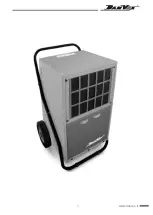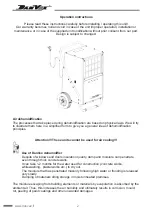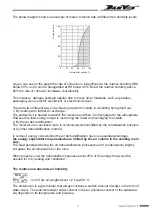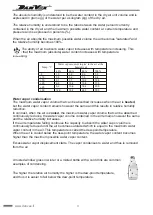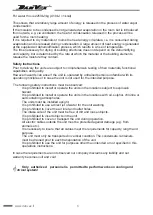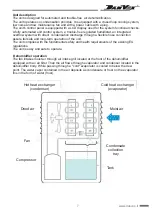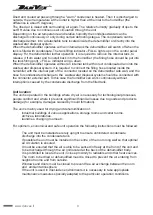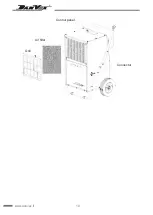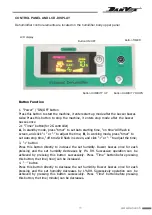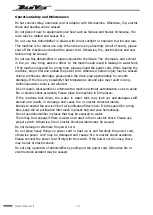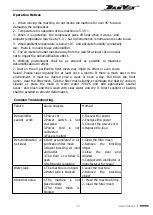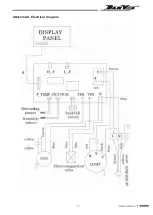
R
www.danvex.fi
Drying materials
Building materials/structures can absorb considerable amounts of water, e.g. bricks can
absorb 90-190 l/m3, heavy concrete can absorb 140-190 l/m3, sand-lime bricks can absorb
180-270 l/m3.
Wet materials such as masonry are dried as follows:
·
The moisture contained in the material moves from within the material to the
wall surface.
·
Evaporation takes place on the surface, i.e. water vapor is absorbed by the
ambient air.
·
The air enriched with water vapor continuously circulates through the aie dehumidifier.
It is dehumidified and leaves the unit being slightly heated to absorb the moisture
again.
·
In this way, the moisture content in the material
is continuously reduced and the material dries.
Diagram of the air condition during its circulation through the dehumidifier
The air flow is cooled on the way through the "evaporator-condenser" system till its
temperature is below the dew point. Water vapor condenses, it is collected in a condensate
trap inside the unit. The collected moisture is discharged in the form of water.
5
Heat of condensation
The energy transferred from the condenser to the air consists of:
·
The heat earlier transferred from the evaporator.
·
Useful electrical power
·
The heat of condensation released through the condensation of water vapor.
When liquid turns into a gaseous state, the energy should flow in reverse i.e. from liquid to
gas. This energy is called the
heat of evaporation
. It does not cause any rise of temperature,
it is only necessary for the change from a liquid to a gaseous state. Vice versa, the energy is
released when gas turns into liquid, such energy is called heat of condensation.
The heat generated at condensation and evaporation and is identical.
Evaporator
Condenser
Air
temperature
Dry air
Humidity
time


